A look at the automotive fashions that have shaped Aussie car culture for the past 50-odd years
FOR a sport that is supposed to be about individuality, the car-crafting game has a lot to do with trends, fashions and fads. A look back through the past 35 years of Street Machine reveals that while we may not always be the most fashionable members of society in terms of sartorial splendour, the best and brightest car crafters of their era can spot a trend with a clairvoyance that would put Nostradamus to shame.
Deviations from the orthodoxy of the day are often met with derision, but it is inevitably those who stick to their own path that are the longest remembered. When Ron Barclay’s coral blue HQ ute debuted, it was nothing like the full-chassis Pro Streeters that dominated the scene at the time, but its attainable simplicity created shockwaves wherever it went and inspired countless new builds. Craig Parker’s circuit-inspirted TUFFXY didn’t set off a trend of Group C-style streeters, but he – along with guys like Colin Townsend and Mark Sanders – saw their ‘stop, steer and stomp’ philosophy come to full life with the birth of the Pro Street scene a decade or two later.
Today, stock is hot. When the price of Australian muscle cars soared to stratospheric heights in the early 2000s, they took the price of the cooking models with them, aided and abetted by the price-inflating influence of eBay and Facebook. As a result, many folks now view classic Aussie metal as too valuable to cut up, so stock-bodied cars are the go, increasingly matched with bench seats and column shifts – hiding drivetrains that range from simple cruiser-spec to horsepower in the stupid zone. Of course, not everyone feels that way, with the occasional nostalgic van and 80s street machine being built, along with more than a few 60s-style customs.
Meanwhile, in the burnout, drag and show scenes, anything goes, with the build quality at the top end of the scale edging ever-higher.
What comes next is anybody’s guess!
 EARLY HOT RODS
EARLY HOT RODS
[Above] The first generation of Australian hot rods had a different flavour to most that were being built in the LA area. In fact, ours had more in common with rods on the east coast of the US; channelled roadsters and coupes were very common, the latter often unchopped, though buckets were also popular. Deuce grille shells were a common fitment to ’33 and ’34s. With Chev small-blocks rare until the 70s, flathead and Y-block Ford V8s were the powerplants of choice, with the occasional Chrysler Poly motor in the mix as well. Without easy access to US goodies, parts from local Holdens, Falcons and Valiants were often incorporated, as well as a raft of locally made speed equipment, including rims. As the 70s dawned, wild psychedelic paintjobs became popular for a time, before the resto-rod trend took over, favouring largely stock body styles.
 AUSTRALIAN CUSTOMS
AUSTRALIAN CUSTOMS
Though largely forgotten now, custom cars were a fad as popular in the 60s as vans became in the 70s. In sheds and driveways around the country, early Holdens, Falcons, Valiants, English and some Yank cars were treated to custom grilles, tail-lights, dashboards and more. Many of these served duty both on the street and the strip, while many others were constant works in progress. Roof chops and coupe conversions were less common, though there were many convertible jobs done – popularised by custom legend Dale Fisher and his contemporaries. A trend of chopping and slicing FX-FJ Holdens into sporty coupes such as the Bobcat and Draggin’ Coupe was a relatively small but influential movement. The custom trend slowed in the early 70s, as vans and muscle cars became the rage.
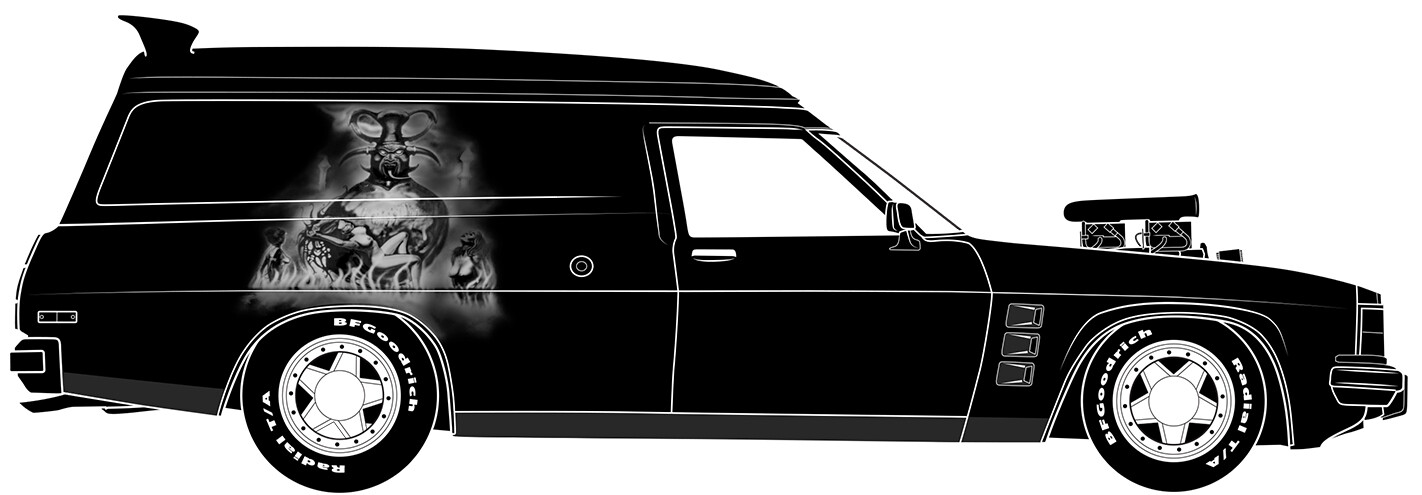 VANNING
VANNING
Sin bins were big business in the 70s and early 80s. What began with surfing, shagging and CBs morphed into a genuine youth movement that sent tremors of delight through both the aftermarket and the marketing bods at the Big Three. In the early 70s, vans were largely stock-bodied, with spoilers, bubble windows, mag wheels, plush interiors and flash paint doing the talking. Towards the late 70s, Van Wheels magazine appeared and so did dedicated van shows, led by the Movin’ Free Spectacular and the Norman G Booth Van Exhibition. The scene exploded and wild body mods, engine swaps and crazy detail became de rigueur. Some vans were rebuilt yearly just to keep up with the competition. It was a heady but unsustainable time, and by the mid 80s, the scene – like Van Wheels – had given way to street machines.
 EARLY STREET MACHINES
EARLY STREET MACHINES
It is easy to forget that the Toranas, Monaros, GT Falcons and Chargers that formed the core of the early street machine movement were 10 years old or less when they appeared in the first editions of SM. Early Holdens were also popular, with Falcons and Vals of the same vintage less common. Yank muscle was highly desirable, but expensive – especially in two-door form. Some of the touchstones and techniques of the van scene remained; murals, flared guards, body mods (including GT bonnet scoops on Holdens and Trans Am fronts), chrome everything, velour trim and bulk electronics remained the go in the first half of the 80s. Super-sanitary show builds – starting with the likes of Ian Hazel’s HG wagon – then gained steam, culminating in the insanity of Rex Webster’s FJ. At the same time, the Pro Street trend migrated from the US.
 PRO STREET
PRO STREET
According to Hot Rod, the origins of the Pro Street look started back in 1972, when Grumpy Jenkins built his first full-chassis Chevy Vega for Pro Stock competition. This was the first time massive slicks had been jammed under a stock-bodied car, creating an instant classic look that quickly migrated to the streets. Tubbed, half-chassis street cars became all the rage in the US, often with a 6/71 hanging off the front. By the time Street Machine was born in 1981, the trend had made its way over here, though half-chassis streeters were initially rare. Soon a Pro Street arms race was underway, with the likes of Rob Beauchamp and Greg Carlson upping the ante to Yank-style, tube-chassis madness.
 1990s
1990s
Bu the late 80s and early 90s, the days of wild body mods were largely over and the era of crazy graphics was in, heralded by Dave Bennett’s 1990 SMOTY-winning HQ Monaro. Graphics never fully took hold in the way murals did for the van scene, though, and were supplanted later in the decade by lots of pastels. The dual winners of the 1995 SMOTY award are great examples of what went on. Howard Astill’s Pro Street-style XA coupe was adorned with graphics, decked out with wild custom trim and ran a blown and EFI 460 big-block for grunt and a massive Pioneer sound system for tunes. His co-winner was Darryl McBeth; his FJ was painted in pastel orange, powered by a blown small-block and smoothed out to the max.
 THE SUMMERNATS SPECIAL
THE SUMMERNATS SPECIAL
The tradition of the Summernats Special began with the Street Machine Nationals, with the likes of the Nalinga Lowriders’ Brougham starting to appear on the scene, providing maximum fun for minimum bucks. The Baby Cup convertible HQ, the Team Lorenzo Party Bus and many others continue the tradition to this day.
 SMOOTH RODDING
SMOOTH RODDING
In the mid-1980s, hot rodding worldwide went smooth and high-tech, a reaction against the resto-rod look that dominated the 70s. The movement started much earlier than that, popularised by the likes of the Boyd Coddington-built Vern Luce coupe, Jim Ewing’s SuperBell coupe and Billy Gibbons’s Eliminator ’33 coupe. Garry Ward’s radical ’33 roadster was a mid-80s Australian take on the vibe. By the 90s, the movement was in full swing. Factory lumps and bumps like door hinges and bumpers were out, replaced by super-smooth panels, pastel paint, digital dashboards and increasingly high-tech drivetrains. The smooth look arguably peaked (in Australia at least) when Mark Course debuted his JUCETR.
 2000s ELITE
2000s ELITE
Despite a long and slow recovery from recession, people never stopped having a crack at building elite show cars, with a debut at Summernats and then a trip shortly after to the Melbourne Hot Rod Show the ritual. When the Sydney Hot Rod Show turned into MotorEx, things ramped up, giving builders another big platform to debut cars – and another lot of trophies to aim for. The elite builds split into two camps – those that were firmly on the side of full registration and those that just wanted to let all their automotive fantasies run loose. The Pro Street cars of the 80s have been replaced by full-tilt drag cars that are built to full show quality, such as Angela Dow’s SMOTY-winning LX, Danny Makdessi’s Valiant and Mark Hayes’s new LC.
 TUFF STREET
TUFF STREET
The Tuff Street competition at Street Machine Summernats is all about the nastiest streeters around – blown engines, big rubber, rollcages, harnesses and more. It differs from 80s Pro Street in that it isn’t about aluminium interior panels and full-chassis builds – it is about building a tough car you can have fun with. Some compete in burnout comps, others drag race, or indulge in the fun of Powercruise-style events, while some are seemingly built just to lap the Summernats cruise route. Gary Myers’s GM176 is probably the definitive example, along with Mark Schwarz’s HANFUL HQ Monaro, Arby’s original WAR440 and a host of other show ’n’go monsters.
 AUTO SALON
AUTO SALON
For a time, the Auto Salon series of shows looked to be The Next Big Thing on the Australian street scene. Late-model Japanese imports were big, providing lots of accessible – and highly tuneable – horsepower to cashed-up youth, a move away from the old-school fours and rotaries. In many ways mirroring the van craze of the 70s, the import movement grew quickly, fuelled by media reports of ram-raiding WRXs, a burgeoning publishing industry and whipped into a frenzy by show competition. Like the vans, the imports at the sharp end became increasingly outlandish and impractical, with murals, crazy body mods and insane interior fit-outs – including, but not limited to, fishtanks. When Jamie Kochaniewicz entered the game with a Holden ute and won God of Auto Salon in 2001, the movement had jumped the shark.
 RAT RODS
RAT RODS
No term inspires crazy like ‘rat rod’. The rat had its origins with the beater – low-budget, traditional-style rods, often with primer paint and little in the way of chrome or flash. Flick through late-70s and early-80s copies of Custom Rodder and Street Rodding and you’ll find the odd example of these rods being built in Australia, though they were usually dubbed ‘old-timey’. In the States, younger guys like the Shifters in LA started building traditional-style rods, but with a more punk rock attitude, culminating in Marky Idzardi’s wild Purple People Eater. These cars were reactions against the smooth, billet-laden cars of the era and a respectful but creative doff of the hat to the rods of the 40s, 50s and 60s. These were followed by the ‘in rust we trust’ rat rod movement proper, which ranged from nicely built cars with patina through to rolling death-traps.
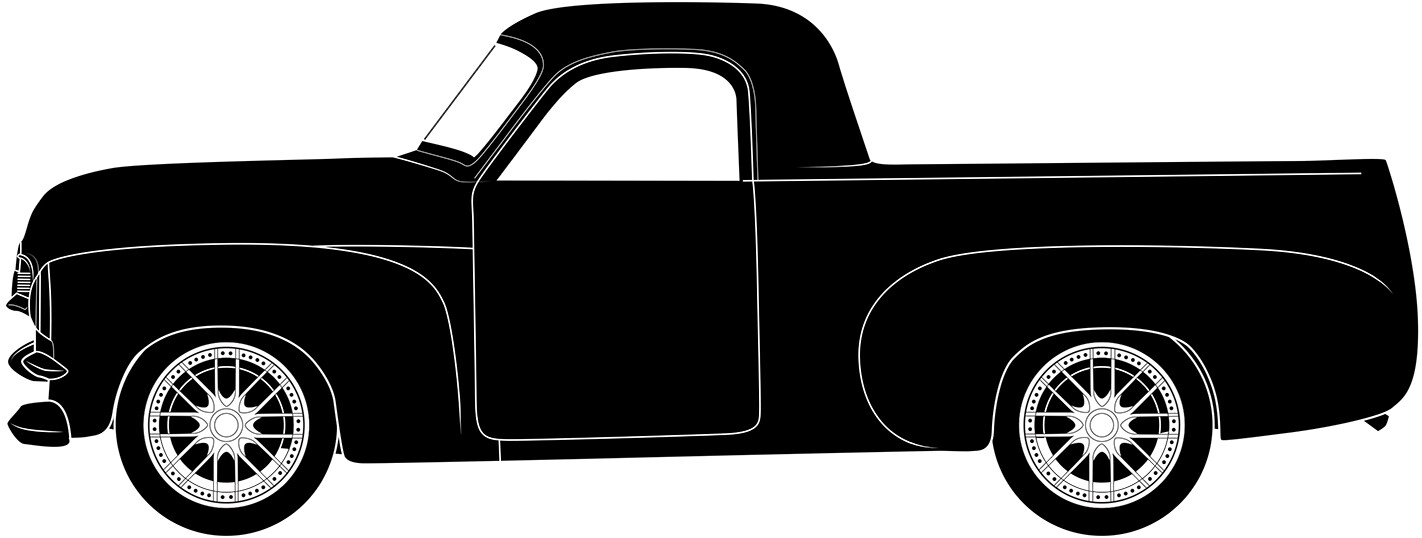 RETRO TECH
RETRO TECH
For a time, the spectre of unleaded petrol and EFI engines seemed to herald doom for the street machines. Our cars couldn’t run on that fuel, could they? And nobody but a scientist would be able to tune them, surely! How wrong the naysayers were. Led by trailblazers like Sydney’s Chris Hillman, Aussies were soon transplanting EFI Holden V8s and V6s into almost anything that moved, aided and abetted by the aftermarket and by the introduction of the Kalmaker software, enabling smarties to tune GM’s Delco computer. The name given to high-tech transplants was retrotech, coined by SM’s Glenn Torrens. These days, the idea of dropping a later-model EFI motor into a cool old body style is just part of the street machine game.
 OUT OF THE BOX
OUT OF THE BOX
Of course, there are those who follow no trends, or at least put a massive spin on them. Castlemaine’s Rod Hadfield has been an innovator all his life, most famously with his Final Objective ’55 Chev, street-registered with a 1650ci Packard Merlin V12. And when he has a go at a trend – for example his ‘rat rod’ Model A pick-up – it is done to a whole other level, in that case with a blown Lincoln V12. Other wild things in his extensive CV include the Warman Special V12 Rolls-powered beach racer and his twin-blown, 429 Shotgun-powered Model T coupe. Other guys used to working way outside the square included Norm Longfield (mid-engined Model A pick-up and many others), Neville Morris (too many to list) and Alan Fleming (Dulux Motivator van, J-Rod). Long may they continue to ignore the rules and blow our minds!
 PRO TOURING
PRO TOURING
Drag racing has had a massive influence on the style and engineering of street machines, but circuit racing had an influence too, most prominently via our enduring love affair with the Bathurst heroes of years gone by. High-end street machines with a circuit influence were a rarity in the 80s and early 90s, with guys like Colin Townsend, Craig Parker, Mark Sanders and Howard Bell being notable exceptions in creating memorable cars that focused as much on cornering and braking as they did on outright power. These days, the influence of the US pro touring scene is starting to be felt, with Clay Barker’s BUILTQ, Adam Barnes’s HARDHT and Howard Astill’s SWEET66 Monaro being great examples of the breed.
 NOSTALGIA DRAGS
NOSTALGIA DRAGS
The sport of drag racing has been through all kinds of ups and downs over the past couple of decades, but throughout it all the introduction of nostalgia drag racing to Australia has been a welcome blast of fresh, chilled-out air. The movement peaked in popularity during the first few years that the guys from Cruzin mag ran their own very successful series, but even now there are always plenty of new cars being built, be they for dirt drag action at events like Chopped, right up to Graeme Cowin’s Outlaw Nitro Funny Cars. Another welcome addition to the scene are the cacklefest cars, which allows builders to restore or re-create cool old-school race cars, without having to account for modern safety guidelines.
 BURNOUT MASTERS
BURNOUT MASTERS
Love them or hate them, burnouts have been a part of our scene since before anyone dreamed up the term ‘street machine’. The scene has come a long way since guys like John Petersen ruled the roost at the early Street Machine Nationals. Gary Myers and Victor Bray set the standard for street machines and drag cars respectively for years, until the sport exploded in the early-to-mid 2000s. More comps, bigger prize pools and massive crowds drew in more competitors. While at one end of the spectrum, almost anyone can build a fun skidpig for pocket change, at the top end guys like Steve Loader and Peter Grmusa started building burnout cars that could literally drive out of the Top 60 Hall at Summernats and onto the pad.
 TRADITIONAL HOT RODS
TRADITIONAL HOT RODS
With the rat rod era slowly rusting into the pages of history, a move toward building hot rods based on particular styles from the 40s, 50s and 60s has taken off. There have always been a few who have flown the flag for the traditional styles during the billet era, such as Geoff Rea and Mark Brownrigg, but in recent years a new generation of builders have latched onto the idea with vigour. Events such as Chopped, the Boogaloo Invitational and the River City Coupe & Roadster Club’s Reliability Run give the guys and girls building these cars something to aim for and a place to display their rides amongst cars with a similar vibe. While the more austere 40s and 50s look has been popular, there are now a few 60s-style show rods getting around.
 ADELAIDE/GEELONG STYLE
ADELAIDE/GEELONG STYLE
Sure, there are plenty of tough, but smooth, Center Line-shod cars with great stance in all corners of the country, but for some reason Adelaide and Geelong seem to have more than their fair share. As we alluded to at the start of the yarn, the prices of Aussie muscle cars and their lesser brethren have been marching ever northward, with the effect of making people reluctant to perform major surgery on their precious bodywork. Thus, the Adelaide style has taken off around the country. An offshoot of this is the grandad-spec car – outwardly stock, with skinny steel rims, bench seats, column shifts and pea-shooter exhausts – but with serious horsepower concealed beneath reverse-cowl-free bonnets.
 MODERN ELITE
MODERN ELITE
With the competition at the sharp end of the elite show car game spiralling ever further out of control, the introduction of the Street Elite concept has been generally regarded as a Good Thing. Street Elite cars have the same exacting build quality as a full-tilt Top 10 show car, but without the shiny undercarriage. For either class, innovation is the key driver; just check out Mick Fabar’s ZERO’D XR Falcon, Peter Fitzpatrick’s Trilogy FC Holden and Chris Bitmead’s XBOSS Falcon to see what we mean. At the same time, the quality of cars being built for Tuff Street and Street class judging has risen to crazy new heights as well. Great stuff for the fans and also for the industry, with a whole new generation of tradespeople rising to the challenge.


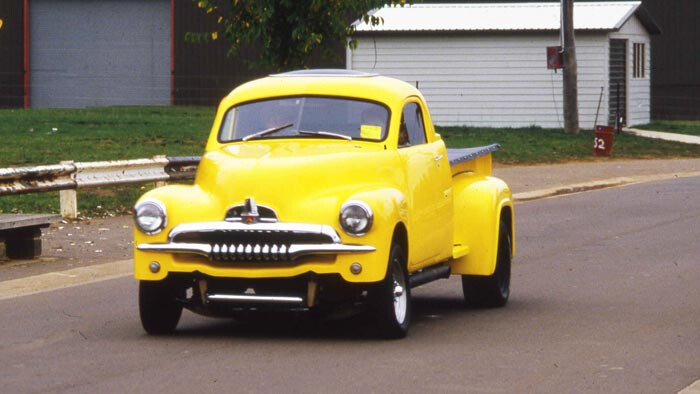
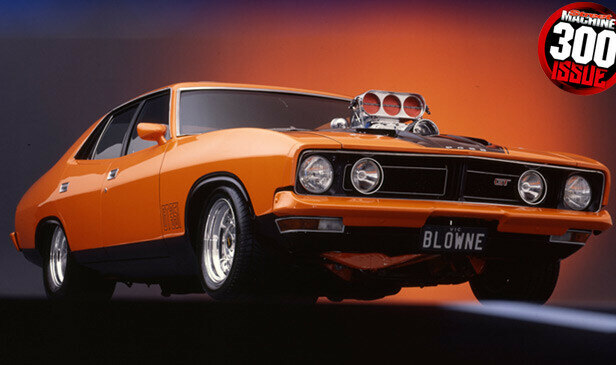
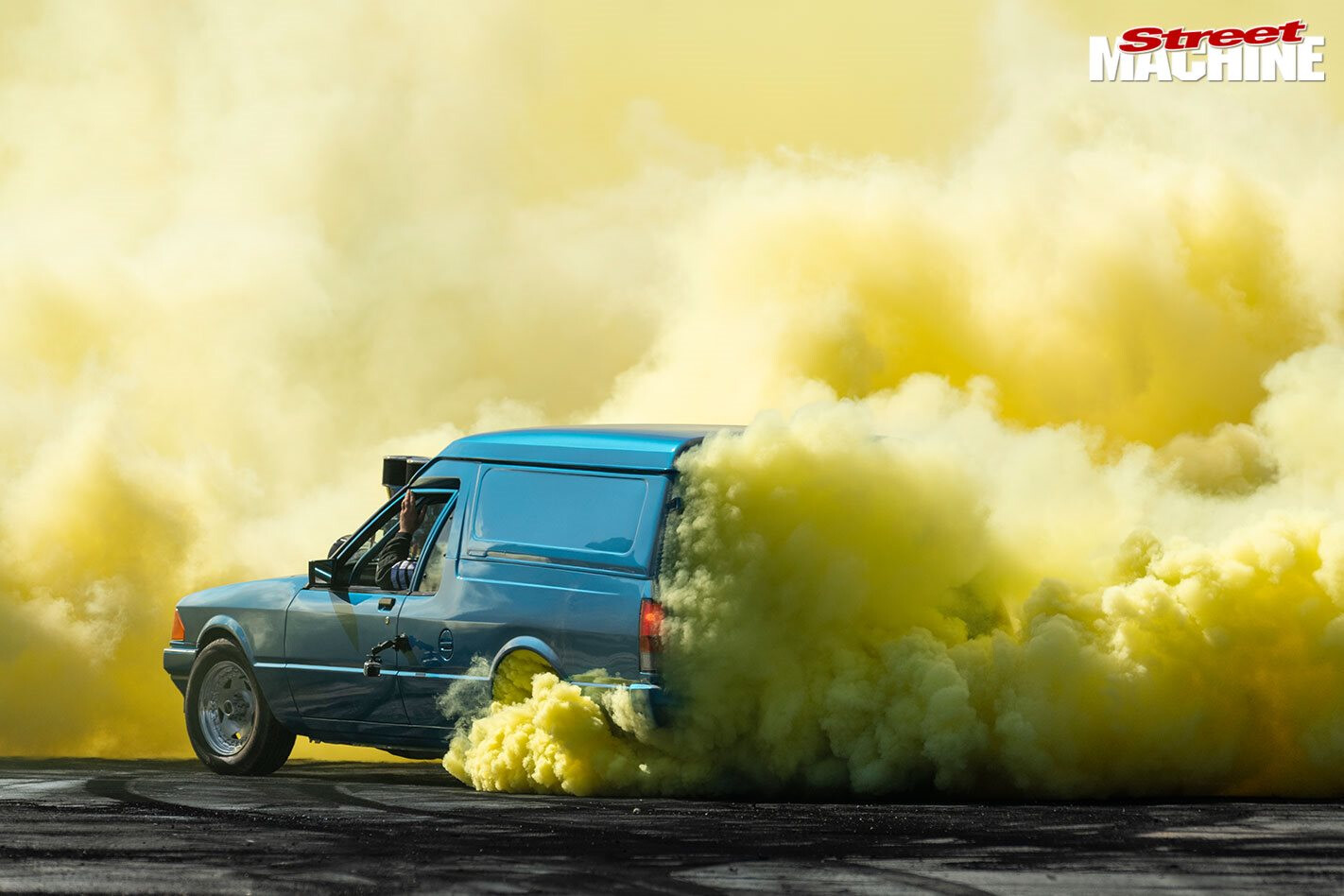
Comments